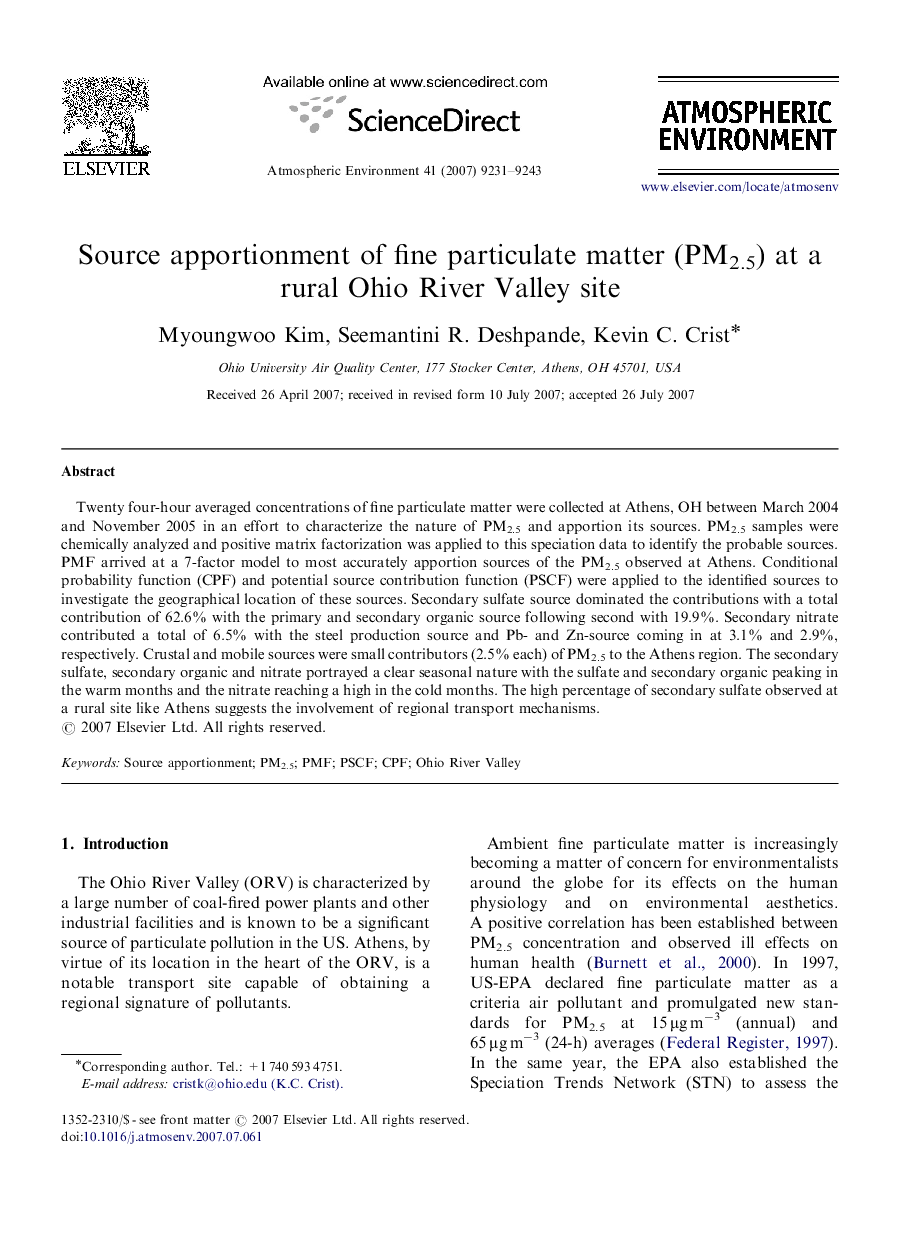| Article ID | Journal | Published Year | Pages | File Type |
|---|---|---|---|---|
| 4443163 | Atmospheric Environment | 2007 | 13 Pages |
Twenty four-hour averaged concentrations of fine particulate matter were collected at Athens, OH between March 2004 and November 2005 in an effort to characterize the nature of PM2.5 and apportion its sources. PM2.5 samples were chemically analyzed and positive matrix factorization was applied to this speciation data to identify the probable sources. PMF arrived at a 7-factor model to most accurately apportion sources of the PM2.5 observed at Athens. Conditional probability function (CPF) and potential source contribution function (PSCF) were applied to the identified sources to investigate the geographical location of these sources. Secondary sulfate source dominated the contributions with a total contribution of 62.6% with the primary and secondary organic source following second with 19.9%. Secondary nitrate contributed a total of 6.5% with the steel production source and Pb- and Zn-source coming in at 3.1% and 2.9%, respectively. Crustal and mobile sources were small contributors (2.5% each) of PM2.5 to the Athens region. The secondary sulfate, secondary organic and nitrate portrayed a clear seasonal nature with the sulfate and secondary organic peaking in the warm months and the nitrate reaching a high in the cold months. The high percentage of secondary sulfate observed at a rural site like Athens suggests the involvement of regional transport mechanisms.
